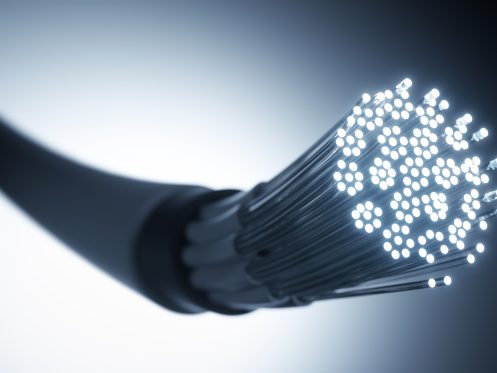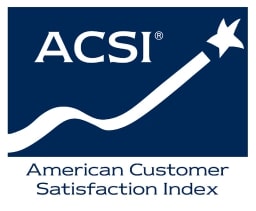If you’re like most people, you likely use the Internet constantly. So does every business and government agency. The Internet is so ingrained in modern life that it’s difficult to remember what life was like before it existed.
However, the countless advances and conveniences enabled by the Internet came at a cost. This technology requires a massive amount of energy, and the hardware to get us online and keep us there requires vast amounts of critical minerals and precious metals.
At GVEC Internet, we’re aware of our Internet infrastructure’s impact on the planet. Computing power, server farms, and other online services require tremendous resources to function. That’s why we’re so excited to be one of the Guadalupe Valley’s premier fiber optic Internet service providers. Here’s how Fiber Internet works and is enabling a greener digital future.
What Are Fiber Optics?
Fiber optics technology uses flexible glass or plastic filaments to transmit data as light pulses. The technology dates back to 1965 but has gained new prominence in the Internet era. The primary reason for that is transmission speed.
A fiber optic cable can carry data at up to 60 terabytes per second using today’s technology. Copper data cables, by contrast, max out at about 10 gigabytes per second. Additionally, modern fiber optic data cables can operate at longer distances with fewer losses, reducing the need for signal repeaters.
The Environmental Benefits of Fiber Optics
From a technical perspective, fiber optics technology offers superior data transmission, but it’s also superior from an environmental perspective for multiple reasons.
Reduced Energy Usage
Studies have demonstrated that fiber optic data networks use up to 70% less electricity than alternatives. Part of that is because copper-based networks use electric signals as a means of data transmission. Also, electrical resistance in copper cables generates heat, so transmission facilities often require energy-intensive cooling systems.
Eco-Friendly Materials
Copper comes from mines that often leave lasting scars on the surrounding environment. That makes the production of copper data cables both expensive and destructive. Fiber optics rely on silicon dioxide, which is more abundant and easier to mine. While it has an environmental impact, it’s far less than that of copper.
Eliminates Electromagnetic Interference
Transmitting data as electrical impulses has a side effect: creating electromagnetic interference (EMI). That interference can, at sufficient strength, degrade electronics and shorten their lifecycle. Sensitive electronics then require electromagnetic shielding, whose production increases their carbon footprint. Fiber optic data networks don’t create EMI, making it safer for use in almost any situation. Plus, it contributes to lower EMI risk in the broader world, improving the radio environment. That allows wireless networks to operate more efficiently at lower power.
How Fiber Optics Help Us Deliver Greener Internet Services
Now you know why fiber optics are a greener alternative to copper-based networks. However, it may still be challenging to understand what it means for an ISP like us.
First, we can operate a network that delivers high-speed Internet service more efficiently. On average, we only need to use less than one watt of electricity for fiber data transmission for each 300 meters. Copper coaxial cable equivalents need approximately 10.5 watts to cover that same distance.
Our fiber optic network is also much more resilient than older coaxial copper-based networks. Most fiber-optic transmission lines in our network will last 25 years or more without needing replacement.
That reduces the amount of waste generated from the replacement cycle. Plus, we can upgrade our network as signaling technology advances without replacing the cables. They’re so performant that upgrades typically occur at either end of the cable. Both of those factors mean a lower carbon footprint associated with the maintenance and management of our network.
Your Green Local ISP
With all the environmental benefits associated with fiber optic Internet service, we hope you’ll consider switching to it. We offer fiber optic Internet service at multiple speeds and price points to homes throughout the Guadalupe Valley. We also have enterprise-grade options, and Internet plans optimized for businesses. All our services come with 24/7 expert technical support.
And if you’re used to poor service from your ISP, you’ll love us. Our customers voted us the number one ISP for customer satisfaction on the 2021 ACSI survey. Also, we’re Better Business Bureau accredited with an A+ rating. So, when you’re ready to switch to fiber optic Internet service in South Central Texas, call GVEC Internet today!


